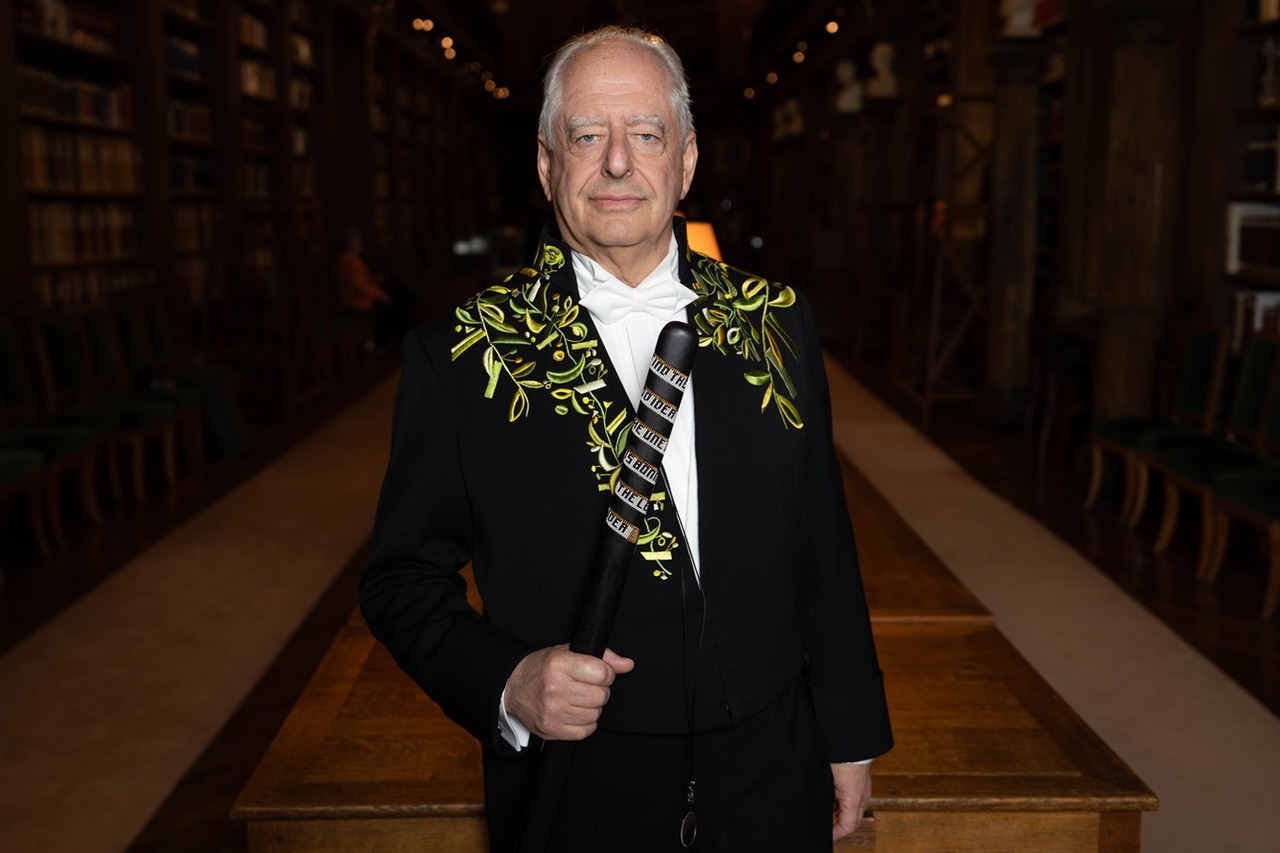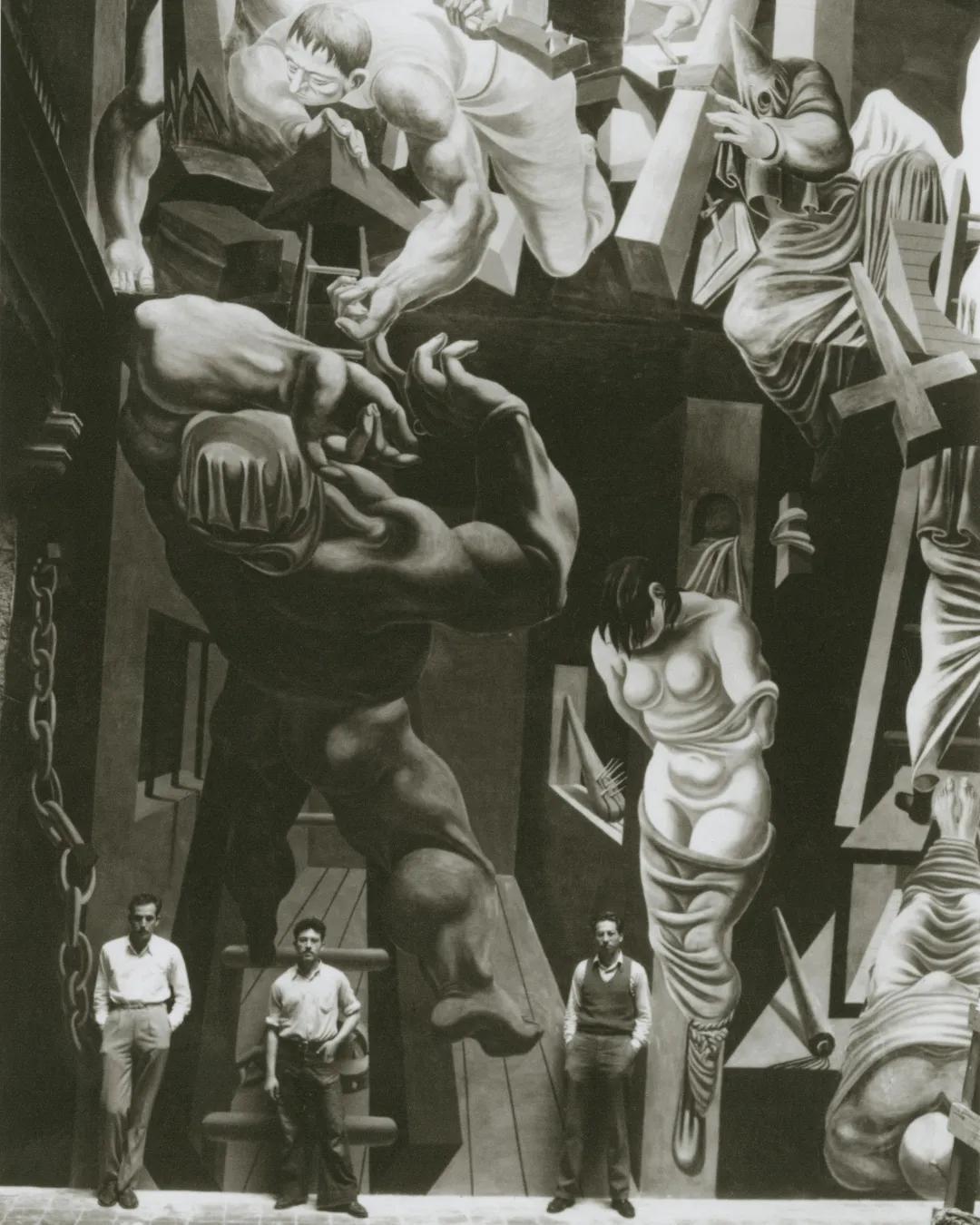Hauser & Wirth Editions

Ida Applebroog, Thank You, Mr. President, 2018 © Ida Applebroog
Hauser & Wirth Editions
23 October 2018
Artists
Printmaking is a critical element within the practice of many of Hauser & Wirth’s artists. For some, the blank plate or paper offers a space for pure material experimentation, a liberation from theory, and a return to the raw creative act. Others find comfort and respite in the precision required by the etching plate or the rigid mechanics of the press, which become the antithesis to the ambiguity and accidental nature of paint, charcoal, or clay. The resulting prints offer powerful insights into creative processes and allow viewers to better understand artists’ perspectives on the world.
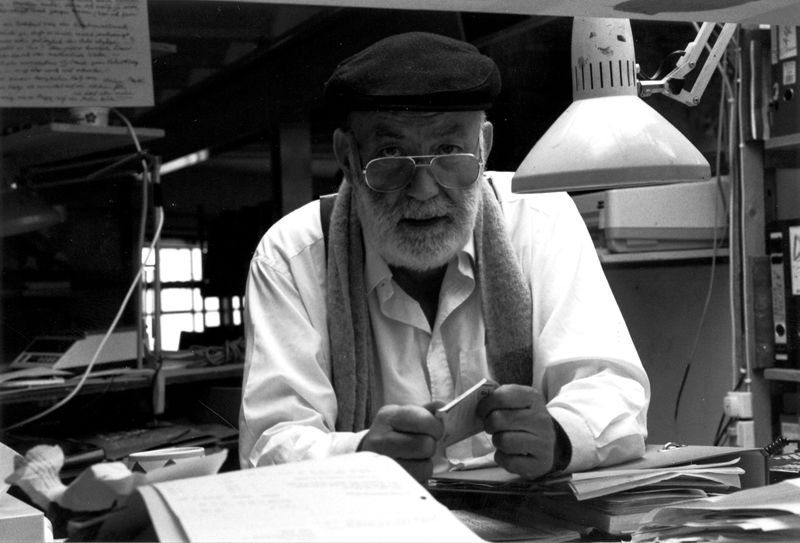
Dieter Roth © Dieter Roth Estate
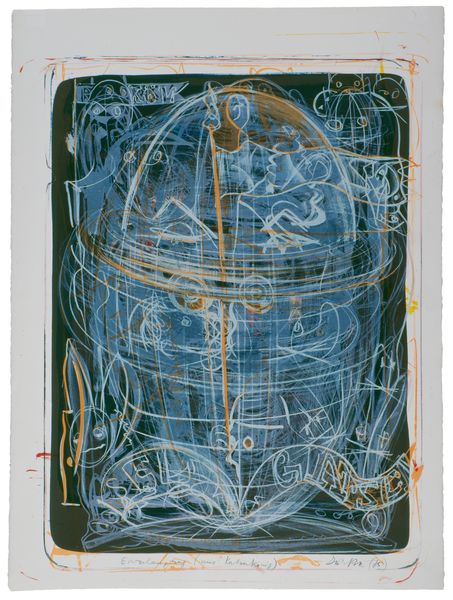
Dieter Roth, Ei, fliegende Fahnen! (Ei, Flying Banners!), 1975
Dieter Roth ‘So-called printing (which actually should be called pressing) that is done then when something flat and simultaneously hard lies there and someone or somebody or something has dabbed it or daubed it with ink and when someone or somebody or something presses a sheet of paper on it or onto it so that he she or it gets a bit of ink stuck to the paper as soon as the paper (after pressing) is pulled off or pulled away (mechanically or manually) from the no-longer-quite-so-bedaubed-as-prior-to-printing hard flatness so that there is some ink on the sheet which may then be termed a pulled print (not an imprint although sometimes an impression can be seen on it).’ From Gesammelte Werk Band 20: Bücher und Grafik (Part 1) [Collected Works Volume 20: Books and Graphics (Part 1)] (Stuttgart: Edition Hansjorg Mayer, 1972), 6, trans. Malcolm Green.

Eduardo Chillida at Galerie Maeght, Paris, 1967. Photo: Clovis Prévost

Eduardo Chillida, Burni Bizitu I, 1967 © Zabalaga-Leku. ARS, New York / VEGAP, Madrid, 2018. Courtesy The Estate of Eduardo Chillida
Eduardo Chillida ‘These are two opposites that, let’s say, are the protagonists of a battle that is at times terrible, and other times it’s the contrary, an absolute agreement which also happens to be what I am searching for. I am right in the middle of the battle, but I am always looking for an agreement. The agreement should be reached after much analysis of the matters at hand, and sometimes, this is a very long process.
To resolve these types of enigmas I thought it would be key, it seemed clear to me that it would be enough with those two values, or better yet, extreme values such and black and white... What I do with black and white is the two-dimensional response to what I do in space.’ From Luxio Ugarte, Chillida: dudas y preguntas (San Sebastian: Erein, 1995), 64–65.

Stanley William Hayter (left) and Takesada Matsutani (right) at Atelier 17, Paris, 1967
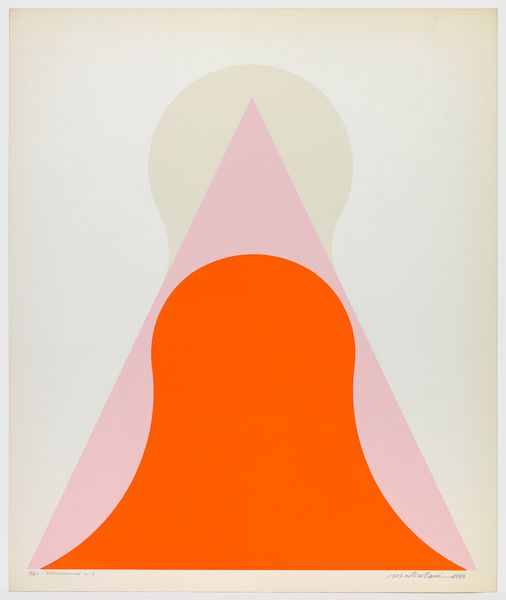
Takesada Matsutani, Propagation-W-S, 1969 © Takesada Matsutani
Takesada Matsutani ‘I started to feel like working again, and I remembered [Stanley William] Hayter’s workshop. I went to his studio, Atelier 17. He welcomed me. This was 1967. I started doing prints but I had been working with glue and had only scant experience with drawing, just sketches when I was still doing “nihonga.” So this became my chance to make prints of the organic glue forms on a flat plane. I became immersed in copper printing.
I made my living by washing dishes at a Japanese restaurant. I could have dinner there, and lunch at Hayter’s workshop. After a while, Hayter asked me to be his assistant and I did that for four or five years. That’s where I learned to make my images on a flat plane. I liked and was influenced by the art of Wassily Kandinsky (1866–1944). With Gutai, it was a reflection of that period. With Hayter, I once again learned how to draw and construct to create a print. Another important thing I learned after going to Europe was how to handle the use of space.’
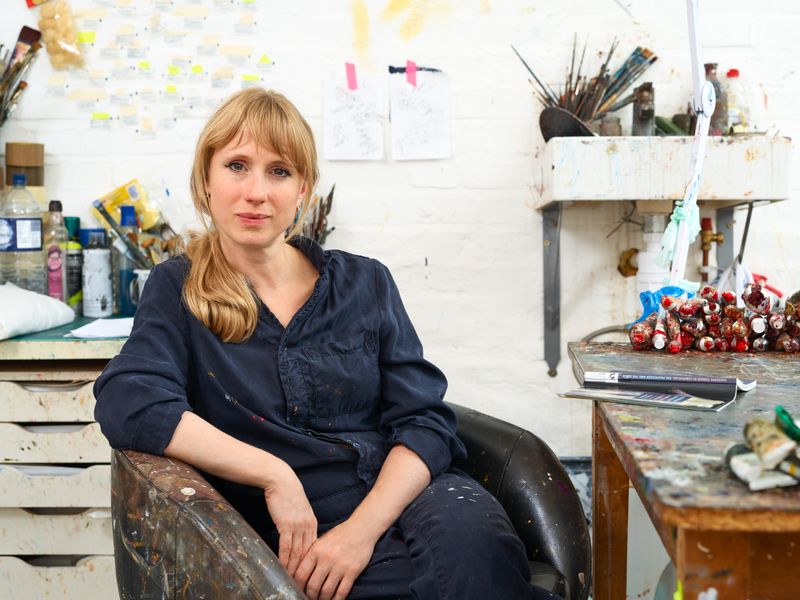
Anj Smith in the studio. Photo: Alex Delfanne

Anj Smith, Night Haul, 2017–18 © Anj Smith
Anj Smith ‘During my postgraduate studies at Goldsmiths, I visited the deserted attic etching rooms to learn the old processes. At that time, I needed to counterbalance my intense immersion in painting, so the antithetical psychology of printmaking felt odd and compelling. All the limitless possibilities, mark variety and reworking—and all the other ambiguities that painting so effortlessly facilitates—were suddenly impossible.
Even a subtle scratch onto a copper plate had to be executed with complete commitment and certainty or the plate was ruined. A tension occurred then that fascinated me and continues to surface in my prints today. On the one hand there’s a real toughness in the material process; the sheets of metal, indelible decision-making, the acids eating away.
Yet somehow, this is inextricably intertwined with the opposite; the extreme vulnerability of the plate’s surface, the engagement with ancient technologies to create something current and new; and in the uncertainty of the final image until the print is pulled from the rollers.’

Rita Ackermann. Photo: Marton Perlaki
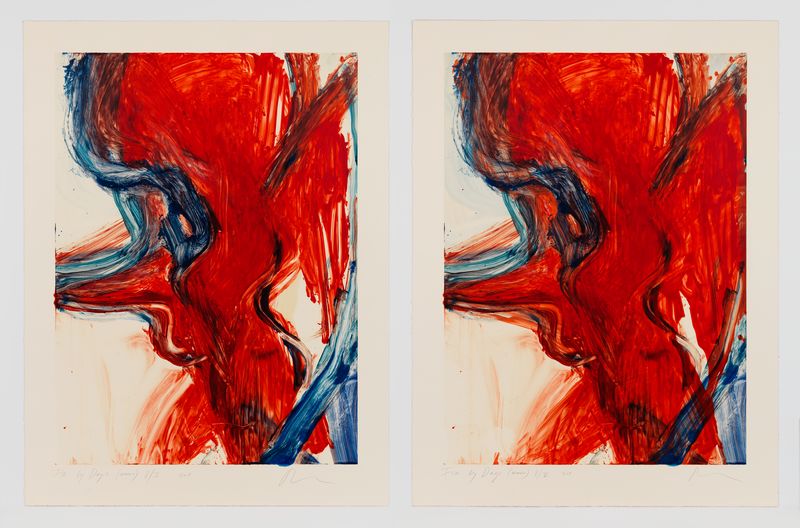
Rita Ackermann, Fire By Days (mono) 8/I and V, 2011 © Rita Ackermann
Rita Ackermann ‘I studied printmaking at the Art Academy of Budapest during my first year, because it was almost impossible to get accepted into the painter’s program. At that time, I recognized monotypes as primitive and direct, and it appeared to be the most humble way of printmaking. After that year in the printmaking program, my interest shifted towards painting and since then I have been devoted to the directness, immediacy and—most importantly—the freedom of painting.
Working with monotypes introduced me to a specific type of immediacy where I learned to experiment with the idea of chance, forcing me to let go of any controlled decisions. The procedure of adding and erasing paint on the monotype plate has a similar feeling to blind painting, because one can never be sure of the print’s final outcome. In my practice, it is important to face the uncertainties in each and every work I create.
The piece must be continually questioned, until it can conquer its own failure and be elevated to an unknown territory where it can then be called 'artwork.' The action of monotype printing fuels my studio practice with inspiration of a newly gained confidence of risk-taking.’
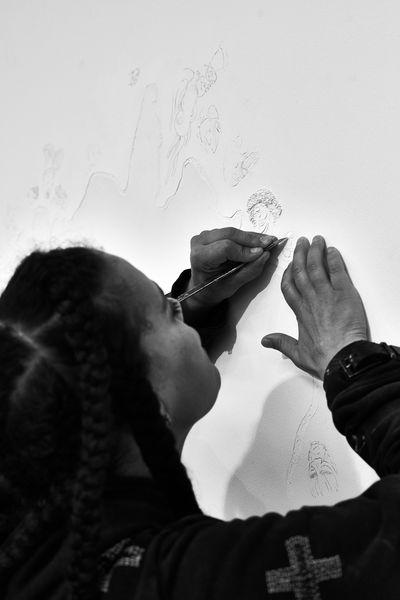
Ellen Gallagher in the studio. Photo: Philippe Vogelenzang

Ellen Gallagher, Image #V, 2000, from portfolio of 10 prints: Ssblak!Ssblak!!Ssblakallblak! Wonder #9 © Ellen Gallagher
Ellen Gallagher ‘Paper as a support, its own materiality is usually ignored. So the sense of a neutral surface that can accommodate any mark seems an ideal way of communicating freedom. At the same time printed material has the capacity to repeat itself endlessly and linked to distribution or manifestos—even freedom however idiosyncratic and inscrutable.’ From an interview by Jessica Morgan in Ellen Gallagher (Boston: Institute of Contemporary Art, 2001), 21.

Matthew Day Jackson. Photo: Ari Marcopoulos
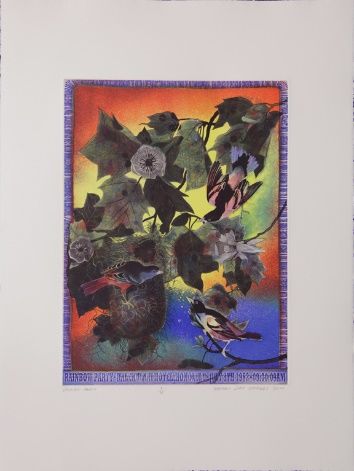
Matthew Day Jackson, Rainbow Party, 2014 © Matthew Day Jackson
Matthew Day Jackson ‘When I entered college and discovered printmaking, it seemed to fit within my ideas of labor and self-worth. I come from a long line of working and making people and I’m proud of that. I grew up with a very clear metric system defining the hourly value of my labor, so in school, the ways that people evaluated art did not always make sense to me. Process and materials, and a boundary between success and failure gave me a clear goal. Between printmaking and team sports, I learned I could be good at something. And I came to truly love the printshop as a very creative space — it is a model for how I work in the studio today.’ From a public conversation with Jennifer Farrell, June 7, 2018, Hauser & Wirth New York.

Ida Applebroog, 2011. Photo: Emily Poole

Ida Applebroog, Thank You, Mr. President, 2018 © Ida Applebroog
Ida Applebroog ‘I like it because it is an inexpensive object and can be replicated many times. It is no longer precious. Most of my prints come from what I am working on at that moment.’ – Hauser & Wirth is delighted to participate for the first time in the Fine Art Print Fair, New York NY, from 25 – 28 October 2018. In conjunction with the Fine Art Print Fair, we're pleased to offer a selection of editions available for purchase online.
Related News
1 / 5

